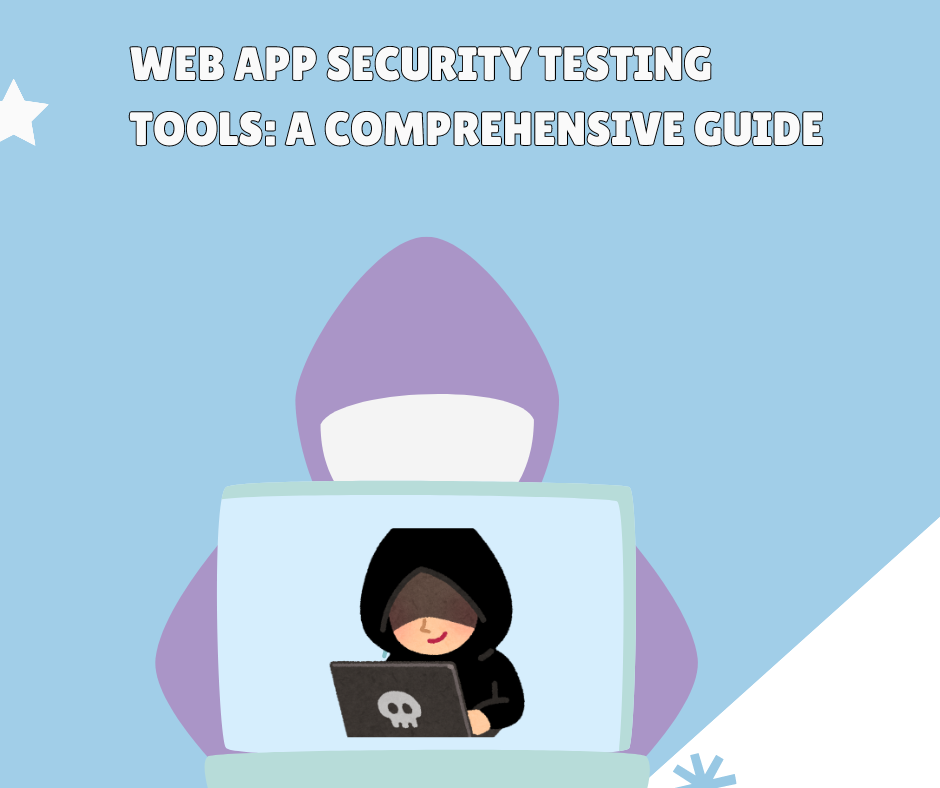Introduction
Web applications have become integral to businesses, offering services and information to users worldwide. However, with the rise of web applications comes the increased risk of security vulnerabilities. Ensuring your web application is secure is paramount, and security testing tools play a crucial role in identifying and mitigating potential threats. This guide provides an overview of the most effective web app security testing tools, helping you safeguard your applications from malicious attacks.
Importance of Web App Security Testing
Before diving into the tools, it's essential to understand why web app security testing is critical:
- Protection of Sensitive Data: Prevent data breaches and ensure the confidentiality, integrity, and availability of data.
- Regulatory Compliance: Adhere to legal standards and regulations such as GDPR, HIPAA, and PCI-DSS.
- Reputation Management: Avoid the negative impact on your brand’s reputation due to security incidents.
- Financial Security: Prevent financial losses resulting from cyber-attacks.
Types of Web App Security Testing
- Static Application Security Testing (SAST): Analyzes the source code for vulnerabilities without executing the program.
- Dynamic Application Security Testing (DAST): Tests the running application to find vulnerabilities by simulating external attacks.
- Interactive Application Security Testing (IAST): Combines elements of SAST and DAST to test applications in real-time.
- Runtime Application Self-Protection (RASP): Monitors and protects applications during runtime.
Top Web App Security Testing Tools
1. OWASP ZAP (Zed Attack Proxy)
Overview: OWASP ZAP is one of the most popular free tools for finding vulnerabilities in web applications. Developed by the Open Web Application Security Project (OWASP), it is easy to use and supports both beginners and professionals.
Key Features:
- Automatic scanning
- Passive and active scanning
- Easy integration with CI/CD pipelines
- Extensive documentation and community support
Use Cases:
- Detecting SQL Injection, Cross-Site Scripting (XSS), and other common vulnerabilities
- Security assessment for development and testing environments
2. Burp Suite
Overview: Burp Suite by PortSwigger is a comprehensive solution for web application security testing. It is widely used by security professionals for its powerful features and ease of use.
Key Features:
- Proxy server for intercepting HTTP/S traffic
- Automated scanner for common vulnerabilities
- Advanced manual testing tools
- Extensible through plugins
Use Cases:
- Penetration testing
- Identifying security weaknesses in web applications
- Comprehensive analysis and reporting
3. Netsparker
Overview: Netsparker is a robust web application security scanner known for its accuracy in detecting vulnerabilities with proof-based scanning.
Key Features:
- Accurate detection with minimal false positives
- Scalable for large applications
- Integration with CI/CD pipelines
- Detailed reports with remediation guidance
Use Cases:
- Enterprise-level security testing
- Continuous security assessment in development pipelines
4. Acunetix
Overview: Acunetix offers a powerful and fast web vulnerability scanner that automatically tests your web applications for a wide range of vulnerabilities.
Key Features:
- Comprehensive scanning for over 4500 vulnerabilities
- Interactive reports and remediation advice
- Integration with issue trackers
- Advanced crawler for complex web applications
Use Cases:
- Automated security testing
- Vulnerability assessment for large and complex web applications
5. Veracode
Overview: Veracode provides a cloud-based platform for application security, offering both static and dynamic analysis.
Key Features:
- Cloud-based scanning for easy scalability
- Detailed vulnerability reports
- Integration with development tools and CI/CD systems
- Comprehensive security training and resources
Use Cases:
- Security testing for both web and mobile applications
- Continuous integration and delivery security
6. Qualys Web Application Scanning
Overview: Qualys offers a cloud-based security solution for identifying and mitigating vulnerabilities in web applications.
Key Features:
- Scalable and automated scanning
- Detailed vulnerability reports
- Integration with Qualys Cloud Platform
- Compliance checks for various standards
Use Cases:
- Large-scale web application security
- Regulatory compliance assessment
7. W3af
Overview: W3af is an open-source web application security scanner and exploitation tool. It is designed to find and exploit web application vulnerabilities.
Key Features:
- Plugin-based architecture
- Wide range of vulnerability checks
- Support for both manual and automated testing
- Detailed reporting and logging
Use Cases:
- Penetration testing
- Automated vulnerability detection and exploitation
8. AppScan
Overview: IBM Security AppScan is a comprehensive tool for finding and managing vulnerabilities in web applications.
Key Features:
- Comprehensive vulnerability scanning
- Integration with development environments
- Detailed reports with remediation guidance
- Support for both web and mobile applications
Use Cases:
- Enterprise-level security testing
- Continuous security integration in development pipelines
Best Practices for Using Security Testing Tools
- Regular Scanning: Perform regular security scans to detect new vulnerabilities as they arise.
- Integrate with CI/CD Pipelines: Incorporate security testing into your development workflow to identify and fix issues early.
- Validate Findings: Manually validate the vulnerabilities found by automated tools to reduce false positives.
- Stay Updated: Ensure your security tools are up-to-date with the latest vulnerability signatures and patches.
- Combine Tools: Use a combination of different tools to cover a broad range of vulnerabilities and ensure comprehensive security.
Emerging Trends in Web App Security Testing
1. Artificial Intelligence and Machine Learning
AI and ML are increasingly being integrated into security testing tools to improve the accuracy and efficiency of vulnerability detection. These technologies can help in identifying complex patterns and anomalies that might be missed by traditional methods.
Benefits:
- Improved threat detection and reduced false positives
- Faster identification of new and evolving threats
- Enhanced analysis of large datasets
2. DevSecOps Integration
The shift towards DevSecOps emphasizes integrating security practices into the DevOps pipeline. This ensures that security is a continuous process, rather than a final step before deployment.
Benefits:
- Early detection and resolution of security issues
- Continuous monitoring and testing
3. Cloud Security Testing
With the growing adoption of cloud services, security testing tools are evolving to address the unique challenges posed by cloud environments. These tools focus on cloud-specific vulnerabilities and compliance issues.
Benefits:
- Protection against cloud-specific threats
- Automated compliance checks
- Scalable security solutions
Choosing the Right Security Testing Tool
When selecting a security testing tool for your web application, consider the following factors:
- Scope and Scale of the Application: Choose a tool that can handle the size and complexity of your application.
- Type of Testing Required: Determine whether you need SAST, DAST, IAST, or a combination of these.
- Ease of Use: Look for tools with user-friendly interfaces and comprehensive documentation.
- Cost: Consider the budget and whether a free or paid tool fits your needs.
- Support and Community: Opt for tools with robust support and an active user community for troubleshooting and advice.
Implementing a Security Testing Strategy
- Define Security Requirements:
- Establish clear security goals and standards based on your application's needs and industry regulations.
- Develop a Testing Plan:
- Create a detailed plan outlining the types of tests to be conducted, the tools to be used, and the testing schedule.
- Automate Testing:
- Implement automated testing to continuously monitor and assess your application for vulnerabilities.
- Conduct Manual Testing:
- Supplement automated testing with manual testing to identify complex vulnerabilities that automated tools might miss.
- Analyze and Report:
- Analyze the results of security tests and generate detailed reports to understand vulnerabilities and their impact.
- Remediate Vulnerabilities:
- Prioritize and address identified vulnerabilities, focusing on critical issues first.
- Review and Improve:
- Regularly review your security testing strategy and tools to ensure they are effective and up-to-date.
Conclusion
Ensuring the security of web applications is an ongoing challenge that requires a proactive approach and the right tools. By understanding the various types of security testing and leveraging the best tools available, you can effectively protect your web applications from potential threats. Tools like OWASP ZAP, Burp Suite, and Acunetix provide powerful capabilities for both automated and manual security testing, making them indispensable assets in your security toolkit. For those seeking to enhance their skills in this area, enrolling in an Ethical Hacking Training Institute in Noida, Delhi, Mumbai, Indore, and other parts of India can provide valuable knowledge and hands-on experience in implementing these security measures effectively.






Comments